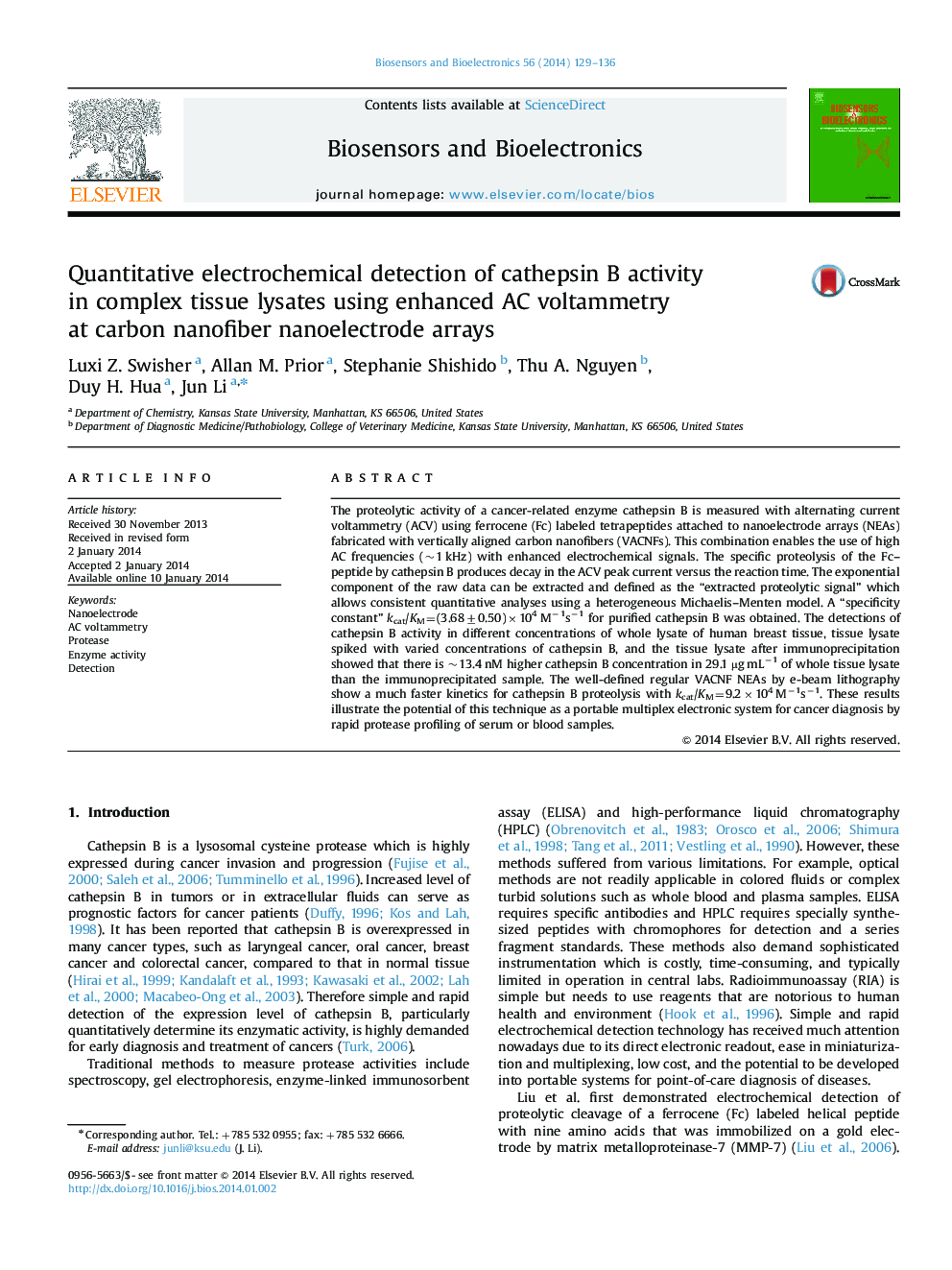| Article ID | Journal | Published Year | Pages | File Type |
|---|---|---|---|---|
| 866626 | Biosensors and Bioelectronics | 2014 | 8 Pages |
The proteolytic activity of a cancer-related enzyme cathepsin B is measured with alternating current voltammetry (ACV) using ferrocene (Fc) labeled tetrapeptides attached to nanoelectrode arrays (NEAs) fabricated with vertically aligned carbon nanofibers (VACNFs). This combination enables the use of high AC frequencies (~1 kHz) with enhanced electrochemical signals. The specific proteolysis of the Fc–peptide by cathepsin B produces decay in the ACV peak current versus the reaction time. The exponential component of the raw data can be extracted and defined as the “extracted proteolytic signal” which allows consistent quantitative analyses using a heterogeneous Michaelis–Menten model. A “specificity constant” kcat/KM=(3.68±0.50)×104 M−1s−1 for purified cathepsin B was obtained. The detections of cathepsin B activity in different concentrations of whole lysate of human breast tissue, tissue lysate spiked with varied concentrations of cathepsin B, and the tissue lysate after immunoprecipitation showed that there is ~13.4 nM higher cathepsin B concentration in 29.1 µg mL−1 of whole tissue lysate than the immunoprecipitated sample. The well-defined regular VACNF NEAs by e-beam lithography show a much faster kinetics for cathepsin B proteolysis with kcat/KM=9.2×104 M−1s−1. These results illustrate the potential of this technique as a portable multiplex electronic system for cancer diagnosis by rapid protease profiling of serum or blood samples.
Graphical abstractFigure optionsDownload full-size imageDownload as PowerPoint slide
